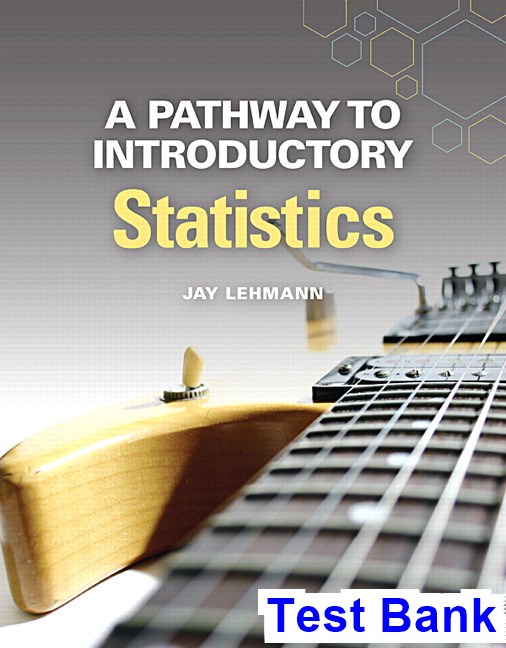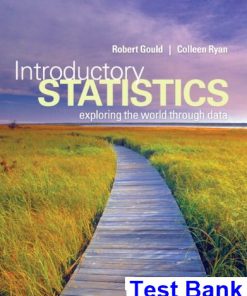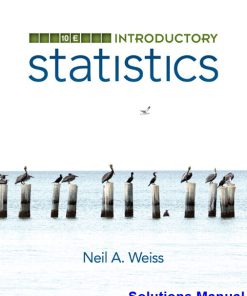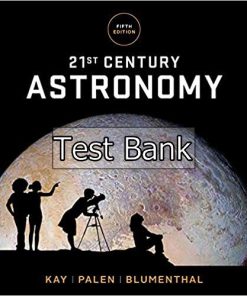. Performing Operations and Evaluating Expressions
1.1 Variables, Constants, Plotting Points, and Inequalities
1.2 Expressions
1.3 Operations with Fractions and Proportions; Converting Units
1.4 Absolute Value and Adding Real Numbers
1.5 Change in a Quantity and Subtracting Real Numbers
1.6 Ratios, Percents, and Multiplying and Dividing Real Numbers
1.7 Exponents, Square Roots, Order of Operations, and Scientific Notation
Hands-On Projects: Stocks Project
2. Designing Observational Studies and Experiments
2.1 Simple Random Sampling
2.2 Systematic, Stratified, and Cluster Sampling
2.3 Observational Studies and Experiments
Hands-On Projects: Survey about Proportions Project; Online Report Project
3. Graphical and Tabular Displays of Data
3.1 Frequency Tables, Relative Frequency Tables, and Bar Graphs
3.2 Pie Charts and Two-Way Tables
3.3 Dotplots, Stemplots, and Time-Series Plots
3.4 Histograms
3.5 Misleading Graphical Displays of Data
Hands-On Projects: Student Loan Default Project
4. Summarizing Data Numerically
4.1 Measures of Center
4.2 Measures of Spread
4.3 Boxplots
Hands-On Projects: Comparison Shopping of Cars Project
5. Computing Probabilities
5.1 Meaning of Probability
5.2 Complement and Addition Rules
5.3 Conditional Probability and the Multiplication Rule for Independent Events
5.4 Finding Probabilities for a Normal Distribution
5.5 Finding Values of Variables for Normal Distributions
Hands-On Projects: Heights of Adults Project
6. Describing Associations of Two Variables Graphically
6.1 Scatterplots
6.2 Determining the Four Characteristics of an Association
6.3 Modeling Linear Associations
Hands-On Projects: Climate Change Project; Volume Project
Linear Graphing Project: Topic of Your Choice 421
7. Graphing Equations of Lines and Linear Models; Rate of Change
7.1 Graphing Equations of Lines and Linear Models
7.2 Rate of Change and Slope of a Line
7.3 Using Slope to Graph Equations of Lines and Linear Models
7.4 Functions
Hands-On Projects: Climate Change Project; Workout Project; Balloon Project
8. Solving Linear Equations and Inequalities to Make Predictions
8.1 Simplifying Expressions
8.2 Solving Linear Equations in One Variable
8.3 Solving Linear Equations to Make Predictions
8.4 Solving Formulas
8.5 Solving Linear Inequalities to Make Predictions
9. Finding Equations of Linear Models
9.1 Using Two Points to Find an Equation of a Line
9.2 Using Two Points to Find an Equation of a Linear Model
9.3 Linear Regression Model
Hands-On Projects: Climate Change Project; Golf Ball Project;
Rope Project; Shadow Project; Linear Project: Topic of Your Choice
10. Using Exponential Models to Make Predictions
10.1 Integer Exponents
10.2 R ational Exponents
10.3 G raphing Exponential Models
10.4 Using Two Points to Find an Equation of an Exponential Model
10.5 E xponential Regression Model
Hands-On Projects: Stringed Instrument Project; Cooling Water Project
Exponential Project: Topic of Your Choice
Appendices
A. Using A TI-84 Graphing Calculator A-1
A.1 Turning a Graphing Calculator On or Off
A.2 Making the Screen Lighter or Darker
A.3 Selecting Numbers Randomly
A.4 Entering Data for a Single Variable
A.5 Constructing a Frequency Histogram
A.6 Computing Median, Mean, Standard Deviation, and other Measures
A.7 Constructing a Boxplot
A.8 Computing Probabilities for a Normal Distribution
A.9 Finding a Value of a Variable for a Normal Distribution
A.10 Constructing a Time-Series Plot or Scatterplot
A.11 Constructing Two Scatterplots That Share the Same Axes
A.12 Computing Correlation Coefficients and Coefficients of Determination
A.13 Turning a Plotter On or Off
A.14 Entering an Equation
A.15 Graphing an Equation
A.16 Tracing a Curve without a Scatterplot
A.17 Zooming
A.18 Setting the Window Format
A.19 Graphing Equations with a Scatterplot
A.20 T racing a Curve with a Scatterplot
A.21 Constructing a Table
A.22 Constructing a Table for Two Equations
A.23 Using “Ask” in a Table
A.24 Finding the Intersection Point(s) of Two Curves
A.25 Turning an Equation On or Off
A.26 Finding a Regression Equation
A.27 Constructing a Residual Plot
A.28 Responding to Error Messages
B. Using Statcrunch
B.1 Selecting Numbers Randomly
B.2 Entering Data
B.3 Constructing Frequency and Relative Frequency Tables
B.4 Constructing Bar Graphs or Multiple Bar Graphs
B.5 Constructing Pie Charts
B.6 Constructing Two-Way Tables
B.7 Constructing Dotplots
B.8 Constructing Stemplots and Split Stems
B.9 Constructing Time-Series Plots
B.10 Constructing Histograms
B.11 Computing Medians, Means, Standard Deviations, and Other Measures
B.12 Constructing Boxplots
B.13 Computing Probabilities for a Normal Distribution
B.14 Finding Values of a Variable for a Normal Distribution
B.15 Constructing Scatterplots
B.16 Computing Linear Correlation Coefficients and Coefficients of Determination
B.17 Finding Linear Regression Equations
B.18 Constructing Residual Plots for Linear Regression Models
C. Standard Normal Distribution
Table C-1
People also search:
a pathway to introductory statistics 1st edition
intro to ap stats
first order model statistics
introductory statistics examples
a pathway to introductory statistics













